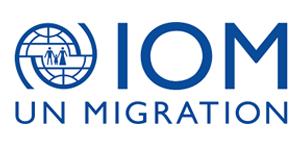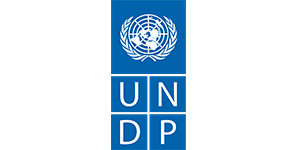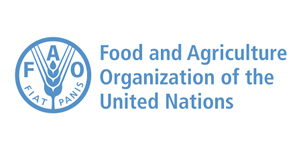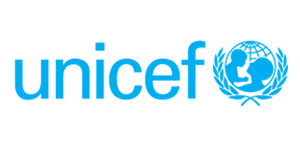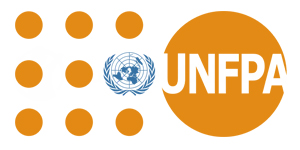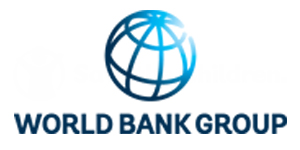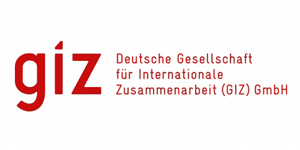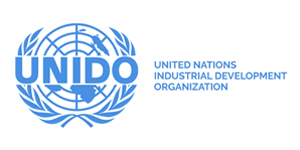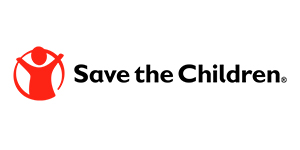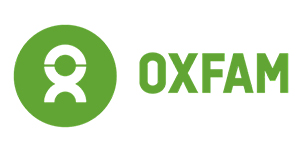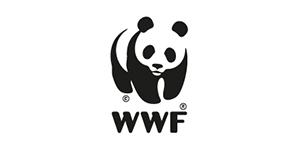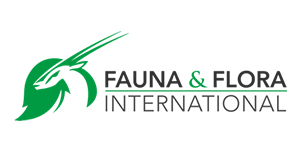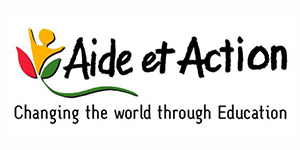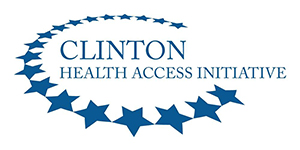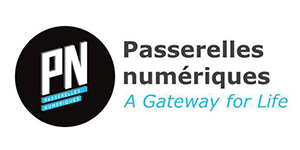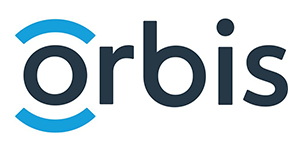WHO WE ARE
USAID leads international development and humanitarian efforts to save lives, reduce poverty, strengthen democratic governance and help people progress beyond assistance.
USAID is the world’s premier international development agency and a catalytic actor driving development results. USAID’s work advances U.S. national security and economic prosperity, demonstrates American generosity, and promotes a path to recipient self-reliance and resilience. The purpose of foreign aid should be ending the need for its existence, and we provide development assistance to help partner countries on their own development journey to self-reliance – looking at ways to help lift lives, build communities, and establish self-sufficiency. Our efforts are both from and for the American people. USAID demonstrates America’s good will around the world; increases global stability by addressing the root causes of violence; opens new markets and generates opportunity for trade; creates innovative solutions for once unsolvable development challenges; saves lives; and advances democracy, governance, and peace.MISSION, VISION AND VALUES
Our Mission: On behalf of the American people, we promote and demonstrate democratic values abroad, and advance a free, peaceful, and prosperous world. In support of America's foreign policy, the U.S. Agency for International Development leads the U.S. Government's international development and disaster assistance through partnerships and investments that save lives, reduce poverty, strengthen democratic governance, and help people emerge from humanitarian crises and progress beyond assistance.
Our objective is to support partners to become self-reliant and capable of leading their own development journeys. We make progress toward this by reducing the reach of conflict, preventing the spread of pandemic disease, and counteracting the drivers of violence, instability, transnational crime and other security threats. We promote American prosperity through investments that expand markets for U.S. exports; create a level playing field for U.S. businesses; and support more stable, resilient, and democratic societies. We stand with people when disaster strikes or crisis emerges as the world leader in humanitarian assistance.Our Core Values
PASSION FOR MISSION We come to work to foster sustainable development and advance human dignity globally.- We each contribute uniquely in advancing our mission, whether by working in different sectors or by supporting global operations and management.
- We aspire to lead international and US Government efforts to advance the economic, political, social, and environmental well-being of the world’s most vulnerable people.
- We continually seek to improve our operations and increase our impact.
- We take pride in our work and our accomplishments.
- We are ethical in all that we do.
- We are fair with colleagues, partners, and those we serve, building relationships of trust.
- We recognize and acknowledge the strength that comes from diversity.
- We value all people equally and treat others as we would like to be treated.
- We consistently demonstrate professionalism and respect in our communications and in our behavior.
- We seek to ensure that all voices are heard.
- We strive to strengthen the voices of the marginalized and vulnerable.
- We value every team member and seek to ensure everyone can fulfill their potential.
- We support programs that engage people across societies and benefit whole communities and countries.
- We value every member of our team, learn from their experience, and foster their active engagement.
- We advance equality, foster equal opportunity and address inequality within our Agency and in our work.
- We design and assess programs with an eye towards constant improvement.
- We recognize that professional development is fundamental to team satisfaction and success.
ORGANIZATION
On behalf of the American people, we promote and demonstrate democratic values abroad, and advance a free, peaceful, and prosperous world. In support of America's foreign policy, the U.S. Agency for International Development leads the U.S. Government's international development and disaster assistance through partnerships and investments that save lives, reduce poverty, strengthen democratic governance, and help people emerge from humanitarian crises and progress beyond assistance.Celebrating Fifty Years of Progress
When the United States Agency for International Development (USAID) was created, it brought together several existing foreign assistance organizations and programs. Until then, there had never been a single agency charged with foreign economic development, so with the passage of the Foreign Assistance Act of 1961 (pdf) by Congress, U.S. foreign assistance activities underwent a major transformation.
Leading this transformation was President John F. Kennedy. President Kennedy recognized the need to unite development into a single agency responsible for administering aid to foreign countries to promote social and economic development. On November 3, 1961, USAID was born and with it a spirit of progress and innovation. November 3, 2011 marked USAID's 50th Anniversary of providing U.S. foreign development assistance From the American People. Our workforce and USAID's culture continues to serve as a reflection of core American values--values that are rooted in a belief for doing the right thing."There is no escaping our obligations: our moral obligations as a wise leader and good neighbor in the interdependent community of free nations – our economic obligations as the wealthiest people in a world of largely poor people, as a nation no longer dependent upon the loans from abroad that once helped us develop our own economy – and our political obligations as the single largest counter to the adversaries of freedom." – John F. Kennedy
USAID HISTORY
Early International Development Efforts The modern-day concept of international development assistance took shape after World War II ended in 1945. George C. Marshall, the Secretary of State from 1947 to 1949 provided significant financial and technical assistance to Europe after the war. Famously known as the Marshall Plan, this was a successful effort that allowed Europe to rebuild its infrastructure, strengthen its economy, and stabilize the region. International Aid Becomes Foreign Policy Building on the success of the Marshall Plan, President Harry S. Truman proposed an international development assistance program in 1949. The 1950 Point Four Program focused on two goals:- Creating markets for the United States by reducing poverty and increasing production in developing countries
- Diminishing the threat of communism by helping countries prosper under capitalism
- Mutual Security Agency
- Foreign Operations Administration
- International Cooperation Administration
- Food and nutrition
- Population planning
- Health
- Education
- Human resources development
- Developing countries received an integrated package of assistance
- Transitional countries received help in times of crisis
- Countries with limited USAID presence received support through nongovernmental organizations (NGOs)
USAID Today
Our objective is to support partners to become self-reliant and capable of leading their own development journeys. We make progress toward this by reducing the reach of conflict, preventing the spread of pandemic disease, and counteracting the drivers of violence, instability, transnational crime and other security threats. We promote American prosperity through investments that expand markets for U.S. exports; create a level playing field for U.S. businesses; and support more stable, resilient, and democratic societies. We stand with people when disaster strikes or crisis emerges as the world leader in humanitarian assistance.OPERATIONAL POLICY (ADS)
Series 100: Agency Organization & Legal Affairs
Series 300: Acquisition & Assistance
Series 500: Management Services
THE JOURNEY TO SELF-RELIANCE
USAID is reorienting its strategies, partnership models, and program practices to achieve greater development outcomes and work toward a time when foreign assistance is no longer necessary. We call it the Journey to Self-Reliance. As partners on this journey, we are empowering host country governments and our partners to achieve locally-sustained results, helping countries mobilize public and private revenues, strengthening local capacities, and accelerating enterprise-driven development. This approach fosters stable, resilient, and prosperous countries that are more self-reliant, and prioritizes enduring partnerships. It is an approach that is good for our partner countries worldwide, U.S. national security, and the American taxpayer.
USAID’s new Policy Framework articulates how the Agency’s Journey to Self-Reliance approach directly contributes to the United States’ National Security Strategy and the Department of State and USAID Joint Strategic Plan. With its focus on fostering self-reliance, the Policy Framework presents a new vision for development and humanitarian assistance: building a country’s capacity to plan, finance, and implement solutions to local development changes, and ensuring that there is a commitment to see these solutions through effectively, inclusively, and with accountability.
Country Roadmaps Help Us Assess Country Progress
To facilitate this shift, USAID needs to understand how self-reliant each of its partner countries is overall – as well as each country’s self-reliance strengths and challenges – and tailor its partnerships accordingly. The Journey to Self-Reliance Country Roadmap is USAID’s standardized analytical tool for measuring country progress across the dimensions of commitment and capacity based on 17 third party, publicly available metrics. The Journey to Self-Reliance Country Roadmap Portal includes Roadmaps for all low- and middle-income countries.
Integration of self-reliance into USAID’s program and planning processes supports cross-Agency efficiency and effectiveness.
Self-Reliance and the Program Cycle
The Program Cycle(link is external) is USAID’s operational model for planning, delivering, assessing, and adapting development programming to achieve more effective and sustainable results. To make self-reliance move from theory to reality, Country Development Cooperation Strategies (CDCSs), regional plans, project and activity designs, monitoring and evaluation plans, and collaborating, learning, and adapting activities are all being re-oriented around the concept of self-reliance. Project design and implementation (link is external)follows prioritized activities in the CDCS and integrates successful approaches for self-reliance. Monitoring and evaluation will play a key role in helping understand how best to help partner countries achieve self-reliance.
Building Knowledge: The Learning Agenda
The Self-Reliance Learning Agenda contributes to a broader understanding of self-reliance and aid effectiveness, and addresses critical knowledge gaps. The Learning Agenda generates, collects, synthesizes, disseminates evidence and learning, and facilitates their use to inform USAID’s efforts to support countries on their journeys to self-reliance.
Catalyzing Self-Reliance
USAID strengthens the ability of partner countries to sustainably support their own development agendas through initiatives that address key aspects:
- Financing Self-Reliance improves countries’ abilities to finance their own economic and social development by introducing a holistic Agency approach to supporting countries to mobilize public revenues and expend resources effectively, transparently, and with accountability, while creating the enabling conditions for private investment and functioning capital markets.
- Private Sector Engagement brings financial and technical expertise to development programs to address challenges that require resources beyond what governments can supply. The private sector has a growing role to play in solving global development problems.
- Redefining our Relationships with Partner Governments is seeking to promote greater commitment from and to strengthen the capacity of partner governments as they lead their country’s Journey to Self-Reliance.
-
Việc làm tại các tổ chức phi chính phủ - NGO Recruitment
- Website: https://ngorecruitment.org/
- Instagram: https://www.instagram.com/ngorecruitment_vn
- LinkedIn: https://www.linkedin.com/in/ngorecruitment
- Group: https://www.facebook.com/groups/VieclamPhichinhphu
- Youtube: http://bit.ly/Youtube_NGORecruitment

